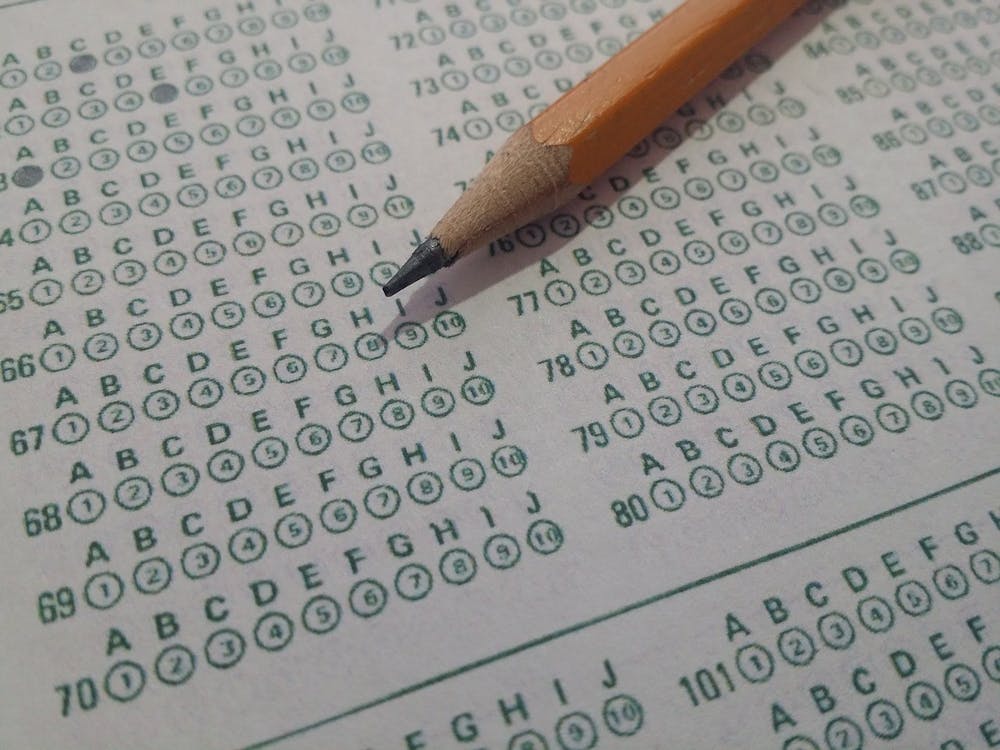From an early age, standardized tests are ingrained in us; study and do well for the test so you can progress in your education. For many students with hopes of attending college, high school is the equivalent of a countdown to the moment you take the standardized test that will essentially dictate your future.
The SAT and ACT are the hallmarks of the college application process. Students who receive lower scores than they anticipated may have their college dreams dashed when they realize they might not have a shot at their dream school if their stats aren’t high enough. For others, the difference of a couple of points can be the determining factor for certain scholarships or tiers of universities. A certain score might get you a full-ride at a regional school, but only sticker price at a prestigious private institution.
Critics have long-noted the difficulties that come with giving a standardized test so much weight. One aspect is the disparities created by the constant push to come out on top with the highest score. Thousands of SAT and ACT prep courses, coaches, and workbooks have sprung up as the testing industry has slowly become more and more commercialized. For students who may struggle with concepts such as reading comprehension and basic test taking strategies, having endless practice tests and hours of personalized coaching can be a significant point-booster.
That is, of course, if you can afford it.
Prep courses can easily run upwards of 500 dollars, with private tutors setting hourly rates based on what they deem fit. This has created an even more pronounced wealth disparity among students who can and cannot afford such additions. While prep courses are not crucial for achieving a desirable score, studies have often shown that the students who would benefit from them the most are the ones who cannot afford them.
Low-income and minority students are already statistically more likely to have overall lower scores, often due to attending schools with a lack of funding and having less free time to dedicate to studying. These factors combined with the inability to supplement their education through SAT and ACT prep often leave low-income students at a disadvantage in the college admissions process.
Studies have also shown that students who take the tests multiple times often improve their scores upon each attempt. By taking the test more than once, students familiarize themselves with the format and content, allowing them to develop better test taking strategies. However, each attempt comes with a price tag, typically ranging from 50 to 60 dollars.
Many low-income students are provided with fee waivers that allow them to take the SAT twice. Yet their wealthier peers may have a dispensable income that enables them to continue taking the test until they achieve their desired score. Low-income and even middle class students often are faced with a limited number of attempts they are frequently ill-prepared for.
After years of criticism and recent scandals that have highlighted the wealth disparity in the college admissions process, more universities than ever are turning away from using SAT and ACT scores as part of their admission evaluations. A record one-in-four colleges no longer use the standardized tests as a major component of their evaluation process. The universities dropping the test scores claim they are doing so as an effort to attract a more diverse student body, both in terms of socioeconomic status and race. Instead, they are establishing themselves as “test-optional” schools, where students may submit test scores if they wish, but the scores will not be a key determining factor in their acceptance.
While most test-optional schools report that they have seen an increase in diversity, some critics call bluff.
According to a correspondence between ACT spokesman Ed Colby and The Washington Post, “‘The literature suggests that test optional policies might result in an increase in the number of applicants, while the diversity of students who actually enroll remains largely unaffected.’”
Some schools may also suffer a hit to their rankings by becoming test-optional. A lowered number of test scores available could translate to lower overall average test scores of admitted applicants. This could cause the university to move down in rankings such as the U.S. News & World Report, which are still used by many as indicators of an attendee’s success.
Test-optional schools also report that they tend to give GPAs, course loads, and extracurricular activities heavier weight in their admissions decisions. In some cases, this might still not be addressing the original problem: low-income and marginalized students do not have the extra funds or time to create a perfectly well-rounded application.
If a student doesn’t have the money to take an SAT prep course, why would they have the money to participate in extracurricular sports? If a student doesn’t have the time to dedicate to studying for the ACT because they work long hours throughout the week, why would they have the time to keep up their GPA? These are the same barriers that disadvantaged students face to get into college at all, which begs the question of how much of a difference a lack of pressure from standardized tests would even make in their college search.
Could making standardized test scores optional give low-income and marginalized students a better shot at pursuing the college education of their dreams? Possibly. But by focusing on just one aspect of the college admissions process that leaves many students at a disadvantage, we might be failing to acknowledge the bigger picture of what has caused that disadvantage in the first place.



